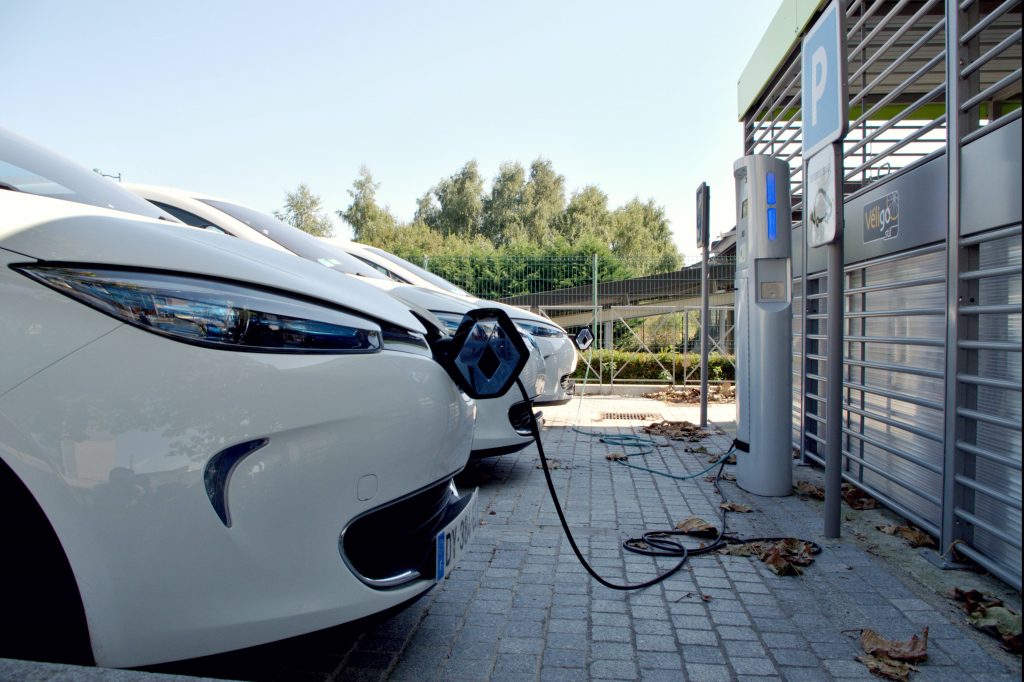A guide to EV charging

The UK is speeding ahead toward net zero emissions, with more and more car buyers shifting gears to go electric. By 2050 we’ll all be driving electric vehicles (EVs) but, in the meantime, it can be confusing understanding all the elements of charging an EV. From learning about the different types of plugs to deciding whether you should invest in a tethered charging unit, going green can quickly turn into a real headache.
If you’re considering buying an EV but confused by all the jargon, have a read of our easy guide to EV charging.
AC charging vs DC charging
Let’s begin with the two different types of power you can use to charge your EV; alternating current (AC) and direct current (DC).
AC is power that comes directly from the grid and needs to be converted to DC to charge an EV. This is done by a converter which is built into the electric car. That is unless you have a DC charger, in which case the converter is within the DC charger itself.
So, what’s the difference? DC charging is much faster than AC charging since it can bypass the car’s converter and supply DC current straight to the car. This method of charging is preferred when you need to recharge an EV quicker on a long journey, for example, at a service station.
However, DC charging requires a lot more power from the grid, resulting in costlier charging tariffs and is only available if your car is compatible with DC charging.
By comparison, AC charges EVs at a reduced rate from DC because it does not draw as much power from the grid, meaning it’ll take longer to get an EV up to full charge.
While this method of charging is not ideal for when you need to quickly recharge your car, it is great for when you want to recharge your car overnight or when you are parked for longer than 20 minutes. The reduced power from AC charging means that less strain is placed on the grid, reducing risk of brownouts and has the added benefit of lower charging tariffs.
Understanding the different types of plugs
There are two main types of plugs when it comes to AC charging: Type 1 and Type 2.
Type 1 plugs are the American/Japanese standard and are the preferred plug for Asian manufacturers, such as Nissan and Mitsubishi. These are very rare throughout Europe and you would be unlikely to see a Type 1 charger at public charging stations in the UK.
Type 2 plugs are the European standard and are the preferred outlet by European manufacturers, such as Audi, BMW and Mercedes. Almost all EVs and plug-in hybrids (PHEVs) are able to charge at Type 2 outlets, so long as they have the correct cable. It is the most common public charge point standard in the UK and most plug-in car owners will have a cable with a Type 2 connector.
For rapid DC chargers, the CHAdeMO and the combined charging system (CCS) chargers are the two competing chargers that provide energy at 50kW. These rapid chargers will typically charge an EV to 80% in 20-40 minutes.
The CHAdeMO charger is not compatible with AC charging outlets. However, cars that use this charger will always have another socket to accommodate at-home slow AC charging. CHAdeMO chargers also have the added advantage of being bi-directional. This means that energy can flow from the charger to the car and equally from the car back to the charger.
While CCS plugs do not currently have bi-directional energy flows, they have the edge of allowing both rapid DC charging as well as slower AC charging. These outlets are available as both Type 1 (CCS1) and Type 2 (CCS2) models, so will be compatible with most charge points.
Next generation DC rapid chargers are looking at increasing the power output to 150kW and even 350kW, dramatically increasing the average time to recharge EVs.
Tethered vs untethered charge points
The final thing to consider is whether you would prefer a tethered or an untethered charge point. This simply describes whether a charge point has a built-in charging cable.
Tethered charge points are the most convenient, since you won’t have to manually plug in your charging cable into your unit each time.
However, tethered cables are at risk of becoming obsolete should the EV market shift to a different type of adapter in the future. This means you’ll need to purchase an adapter if your car isn’t compatible.
Alternatively, you could consider an untethered charger. Most EVs will supply you with an untethered charge cable upon purchase, and you’ll be able to easily change cables should you need a different type of charger or a longer cable length.
The only drawback is that untethered charge points aren’t as convenient as tethered charge points. You may also want to consider whether you have a knack for misplacing items, in which case a built-in charger may be a better option to avoid a £100+ bill.
Mr. Electric is recognised as a government approved installer of EV charge points and is partnered with EO Charging and Rolec EV, two of Europe’s leading designers and manufacturers of electric vehicle charging stations. For more information about EV charging and to learn about the benefits of EV chargers for your home or workplace, contact our expert advisors at Mr. Electric or call 0800 7311 606.




